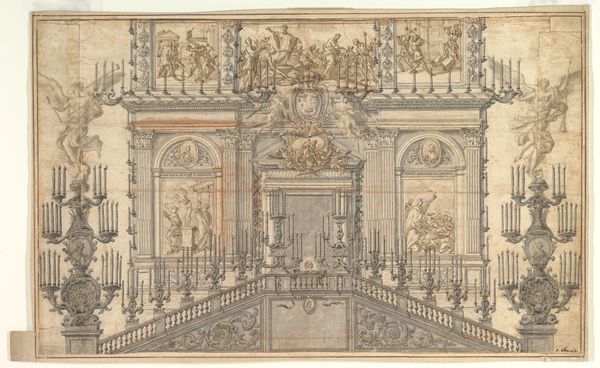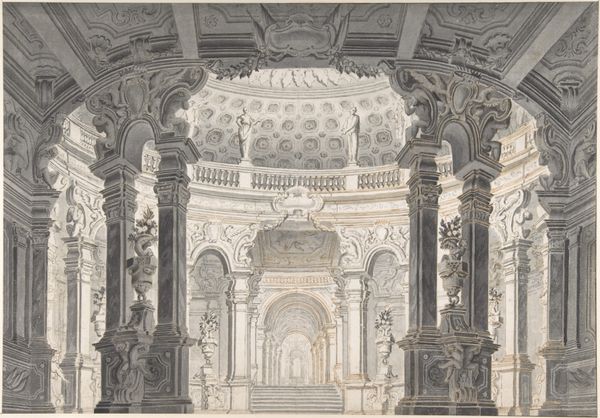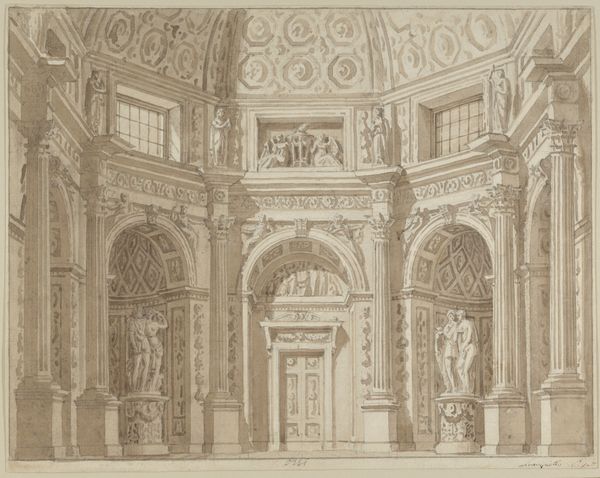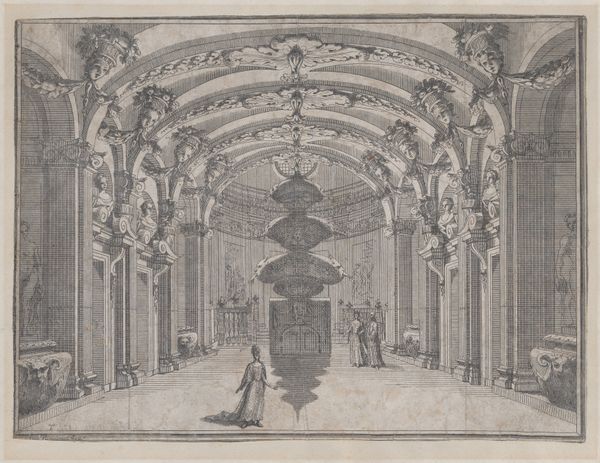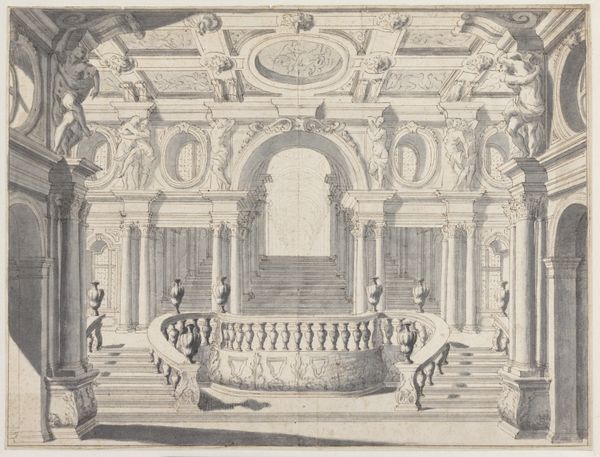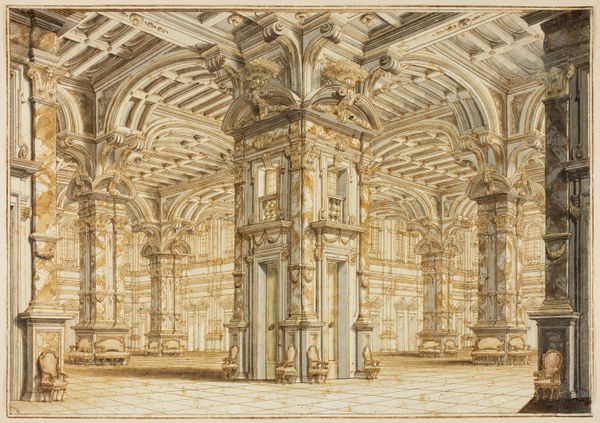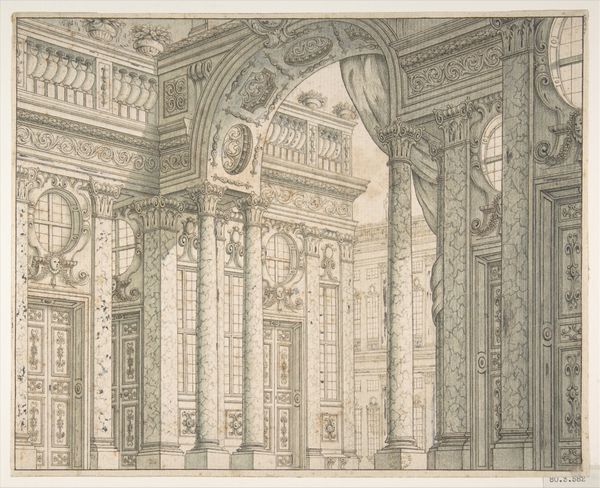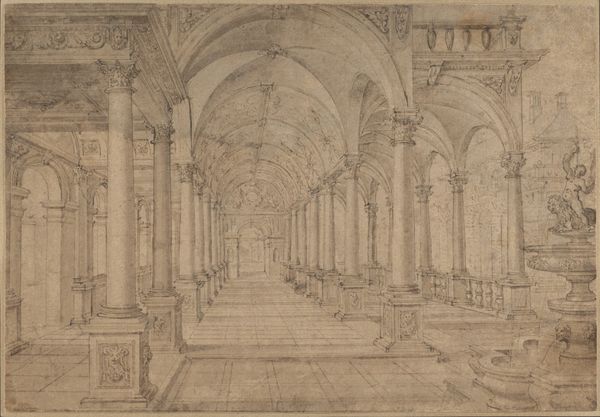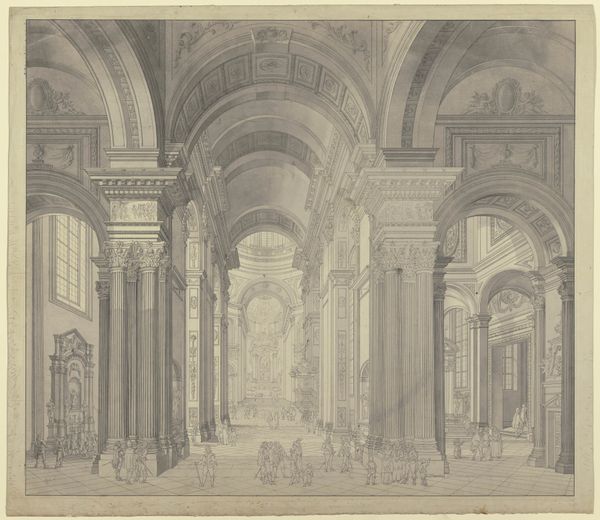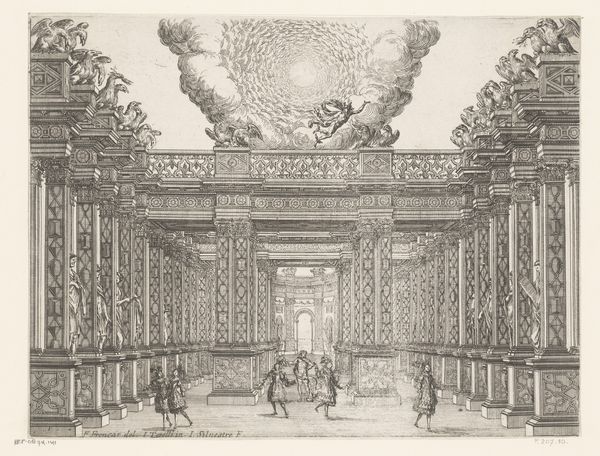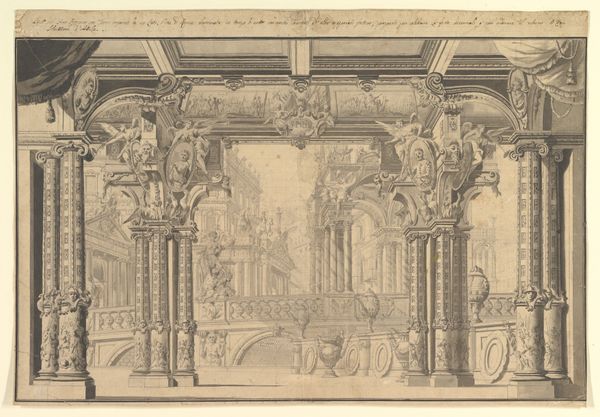
A Stage Design for an Opera with Actors c. 18th century
0:00
0:00
drawing
#
drawing
#
baroque
#
perspective
#
cityscape
#
watercolor
Dimensions: sheet: 31.43 × 49.53 cm (12 3/8 × 19 1/2 in.)
Copyright: National Gallery of Art: CC0 1.0
Giuseppe Galli Bibiena made this stage design for an opera with pen and brown ink, with gray wash over graphite on paper. The scene depicts a grand hall receding into the distance, flanked by ornate columns, arches and decorative elements that create a sense of depth and theatricality. This elaborate style was popular in 18th-century Europe, particularly in courtly settings where opera served as both entertainment and political statement. Bibiena was born in Parma, Italy, and his family dominated the design of theaters across Europe for nearly a century. Opera in this period was an institution deeply entwined with social and political power. Stage design was not merely background, but a reflection of the patron’s wealth, taste, and ambition. Scenography like this would reinforce the social hierarchy, displaying an environment that idealized the wealth and power of the ruling class. To understand the full story, researchers delve into theater history, social history, and the biographies of the artists and patrons involved, helping us understand the politics of imagery.
Comments
No comments
Be the first to comment and join the conversation on the ultimate creative platform.

